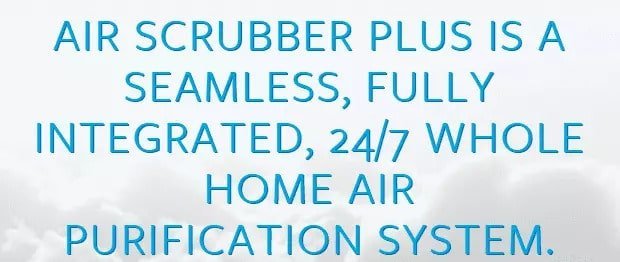What Size Central Air Conditioner Should I Buy?
After months of high utility bills, poor performance and sweaty nights, you’re finally making the call — it’s time to replace your central air conditioning unit. While it might be intimidating at first to price out and size a new AC unit, you can employ some strategies to get a rough estimate for your home’s required cooling power.Ready to learn more about air conditioner sizing? We’ve got the information you need to make the right decision. Read on to learn all about it.Are you ready to upgrade your old HVAC system?Strittmatter Plumbing, Heating and AC has the AC and heating specialists you need to tackle any upgrades, repairs or maintenance. Give us a call today at 940-246-2075 to schedule an appointment.
Understanding Heating Load and Capacity
Don’t you wish a one-size-fits-all strategy worked for everything? The complicated nature of HVAC systems makes them difficult to work on properly. Before you start shopping around for a new central AC unit, a few bits of information can help direct your search. The first concept to grasp is heat load.Heat load is the sum of the heat sources in a building or room. This includes inside occupants, lighting, electronics and anything that will produce heat. We express heat load, also known as heat gain, in British Thermal Units (BTU) or Kilowatts (kW).A few methods are available for calculating heat load. Often, accurate calculations can be fairly complicated. HVAC professionals will be able to better assess the space by including variables like window positioning and heat generated by lighting.While you can get a general idea by calculating heat load using square footage, for better results, rely on a local Flower Mound AC repair specialist. To give you a general idea, let’s explore some simple at-home calculations for heat load.
How to Find Your Buildings Heating Load
Heat load of a room or building is going to depend on a few factors. To get as close to an accurate result as possible, you need to include as much data as you can in your calculations.If math is not your strong suit, consider contacting Strittmatter Plumbing, Heating and AC. Our team of HVAC professionals can make an accurate assessment to get you the right size AC unit without the stress.If you want to go ahead and tackle the calculation yourself, here are the steps:
- Calculate the area, in square feet, of the space you need to cool.
- Multiply that number by 31.25 — the amount of BTUs needed to cool a square foot. The equation will read:Area BTU = ( length x width) x 31.25.
- Next, you’ll need to calculate heat gain from your windows. If windows don’t have blinds or other types of shading, that will factor into your result. You’ll need to find the area of your windows in meters squared.
- For North facing windows —BTU = Area (m. sq.) x 164 (multiply by 1.4 if not shaded)
- For South facing windows —BTU = Area (m. sq.) x 868 (multiply by 1.4 if not shaded)
- Now that you have both your north and south window area BTUs, combine them.Total window BTU = North window BTU + South window BTU
- Now we need to calculate occupant BTUs. Use this equation:Occupant BTU = Number of people x 600.
- Calculate the heat load of each item of machinery in the area — computers, ovens, copiers, etc. You’ll need to find the power in watts for each item and then use this equation:Equipment BTU = Total equipment watts x 3.4
- Next, you need to tackle the heat coming from your lighting. Again, you’ll need to find the total wattage of all your indoor lighting. Use this calculator:Lighting BTU = Total lighting watts x 4.25
- Finally, combine all those numbers.Total heat load BTU = Area BTU + Total Window BTU + Occupant BTU + Equipment BTU + Lighting BTU
Your total heat load BTU will help you decide when comparing the cooling capacity of new AC units. Additionally, an HVAC professional may perform a manual J calculation for even more accurate results.If this all seems like a bit much, you’re not alone. Calculations like these can bring back nightmares of high school algebra. If math is not something you want to tangle with, your local HVAC specialist will be more than happy to take care of the calculations and perform a home energy audit.
A Bigger Hvac Isn’t Always Better
It’s a common misconception to think a larger AC unit will cool your home more efficiently. Air conditioning units that are too large for a space tend to cost more to operate. A bigger unit does not equate to a faster cooling speed.Usually, manufacturers advertise AC units bytonnage>. While this might seem like HVAC jargon, a one-tonne unit will remove 12,000 BTUs of heat per hour. It follows that a two-tonne AC unit will remove 24,000 BTUs per hour, and so on.You might see this and think, “well, bigger is better.” With HVAC systems, it’s not that simple. Oversized AC units can cause some serious issues in the long run.Here are a few common issues with oversized central air conditioning units:
- Short cycling— If your AC unit is too powerful for your space, it might start to short-cycle. This occurs when signals from the thermostat trigger a sequence of shutting on and off, causing damage to components.
- Undersized ductwork— If you replace your existing AC unit with a larger one and don’t alter the ductwork, the new unit will be under extensive static pressure from the limited duct space.
- High humidity— When you use an oversized unit, it tends not to run long enough to properly remove humidity from your home. Excessive moisture can help mold growth and bacterial infestations take hold, which you don’t want to handle yourself.
Can You Use Your Old System’s Measurements to Buy a New Unit?
It might be tempting to use your old system as a measure for your new AC unit. While this might seem logical, the strategy is missing a key component — and that is efficiency.With AC systems, you measure efficiency using the seasonal energy efficiency ratio (SEER). Energy efficiency in HVAC units has only advanced in the last few decades. More energy-efficient AC units mean older units aren’t a good barometer for sizing a new system.
Importance of Correctly Sizing Your Hvac System
An oversized unit can perform, but with some big caveats. Additionally, an undersized unit won’t possess the cooling power needed to chill a large space properly. Getting the correct sizing is a critical step in any new HVAC installation .A properly sized system will be more efficient, provide you a more comfortable home and need fewer repairs down the line. If you want to get the whole lifespan from your new AC, it must be the correct size.
Finding Affordable Flower Mound AC Repair
Correctly sizing your AC unit for your home isn’t as easy as it might seem. With all the calculations and considerations, you can make mistakes without realizing it.For foolproof sizing, contact the helpful team at Strittmatter Plumbing, Heating and AC. Their air condition experts have been providing quality Flower Mound AC repair and installation services for almost 40 years.Contact us today online to schedule an appointment.





